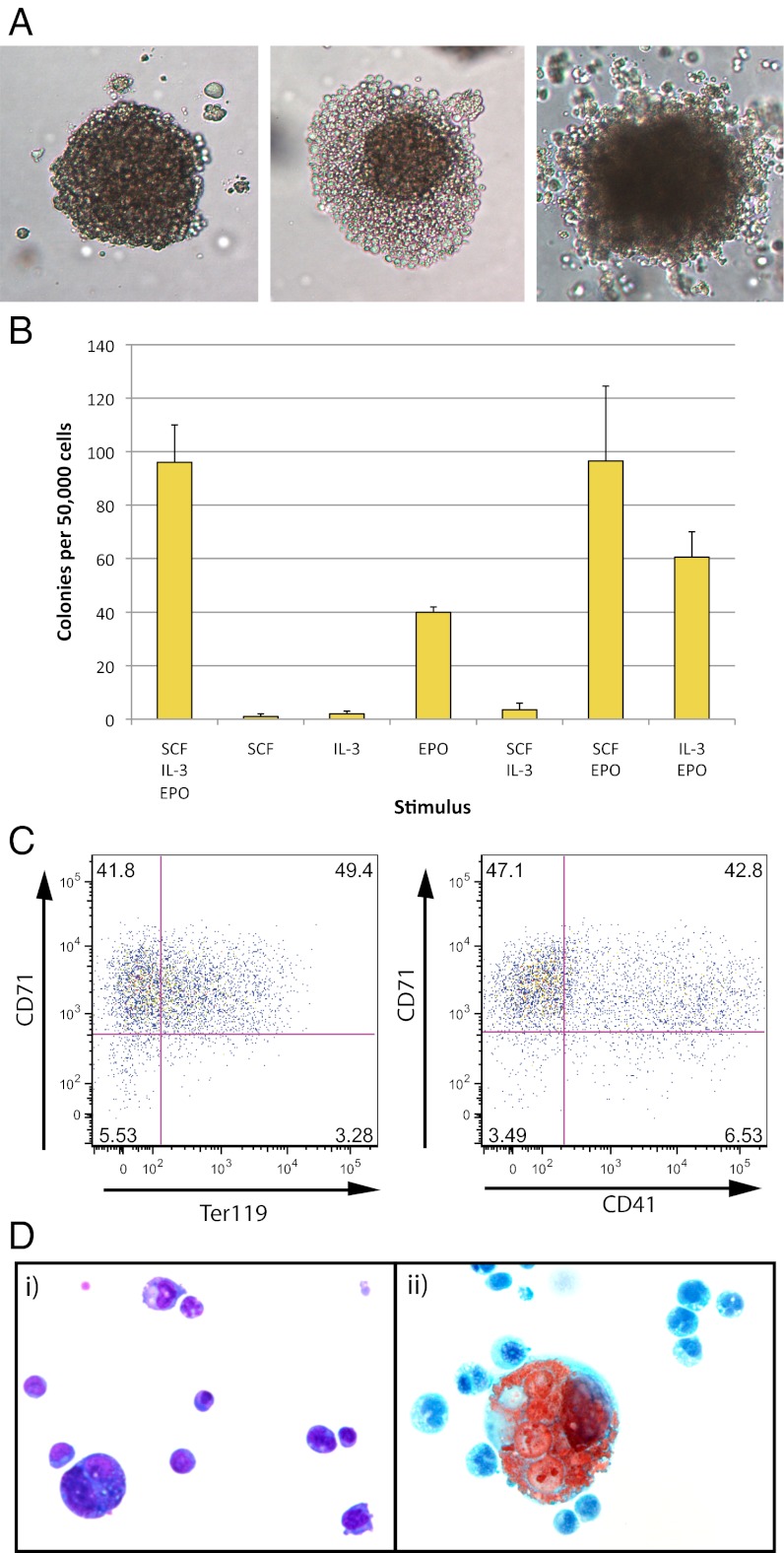Fig. 2.
Clonogenic leukemic cells retain the ability to differentiate along both the erythroid and megakaryocytic lineages. (A) Erythroid colonies generated by leukemic cells in methylcellulose. Spleen cells from leukemic mice generated large erythroid colonies when cultured for 14 d in methylcellulose stimulated with IL-3 plus SCF plus EPO. Three representative colonies are shown. (B) Colony formation was completely dependent on continued cytokine stimulation. EPO was the most active single agent; however, SCF and IL-3 were able to synergize with EPO and increase the number of colonies generated. The mean number of colonies per day 14 culture (± SD) from three separate leukemic mice is shown. A total of 50,000 spleen cells was cultured in the different cytokine combinations given along the x axis. (C) Flow cytometric analysis of erythroid colonies. Cells dissociated from pools of day 14 colonies showed the same CD71, Ter119, and CD41 flow cytometric staining pattern as the primary spleen cells. All cells appeared to be immature erythroblast cells (CD71+ Ter119+/−), with a subset also expressing CD41. (D) Individual colonies were dissociated, cytocentrifuged onto duplicate slides, and stained with May–Grunwald–Giemsa (i) or acetylcholinesterase (ii). This analysis revealed that the majority of colonies contained both erythroid (i) and megakaryocytic cells (ii), indicating that the clonogenic leukemic cells were bipotential.

